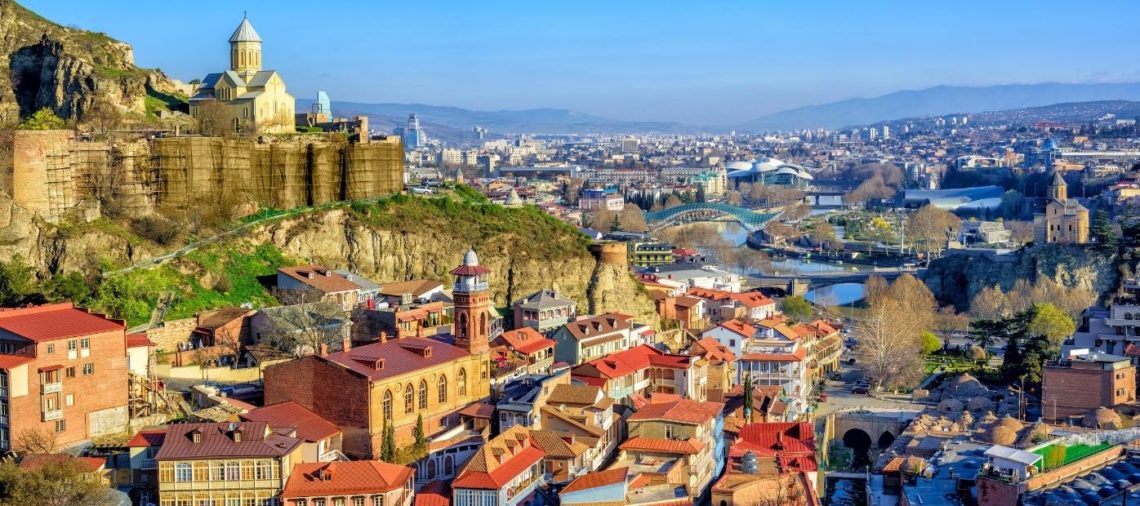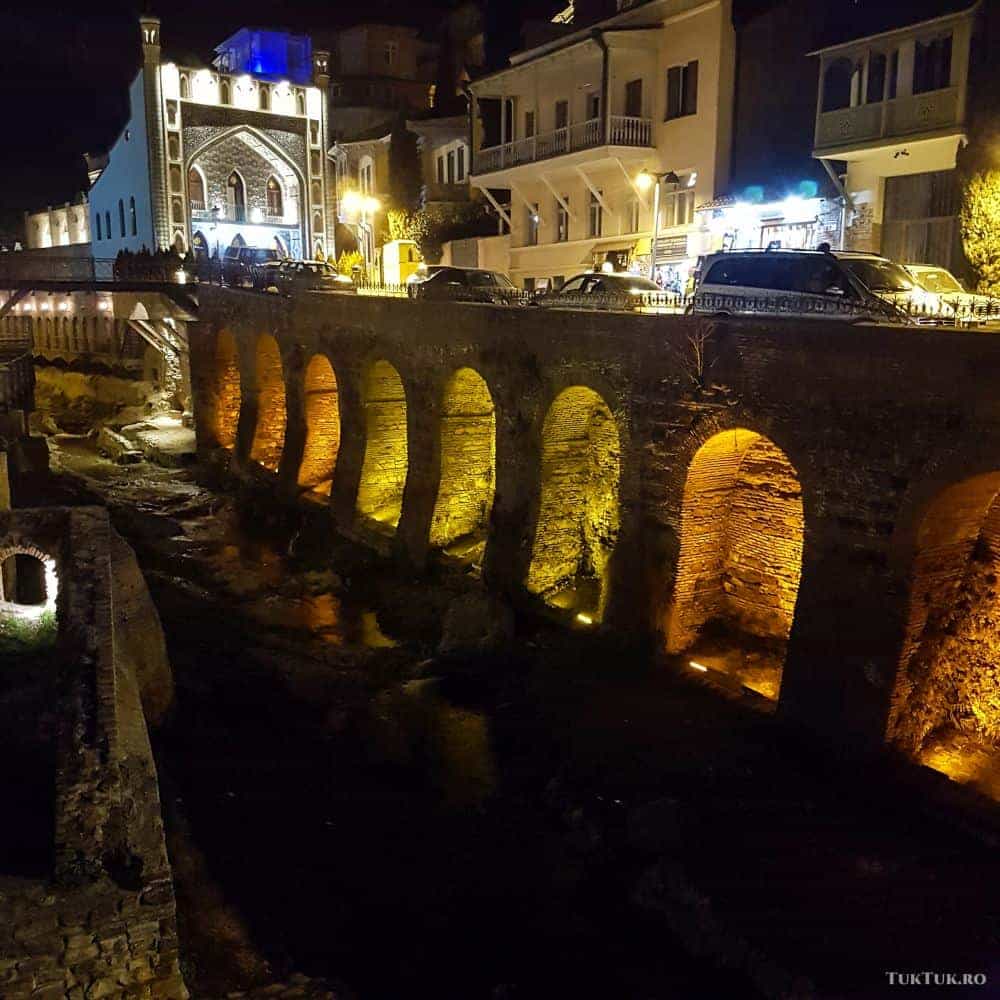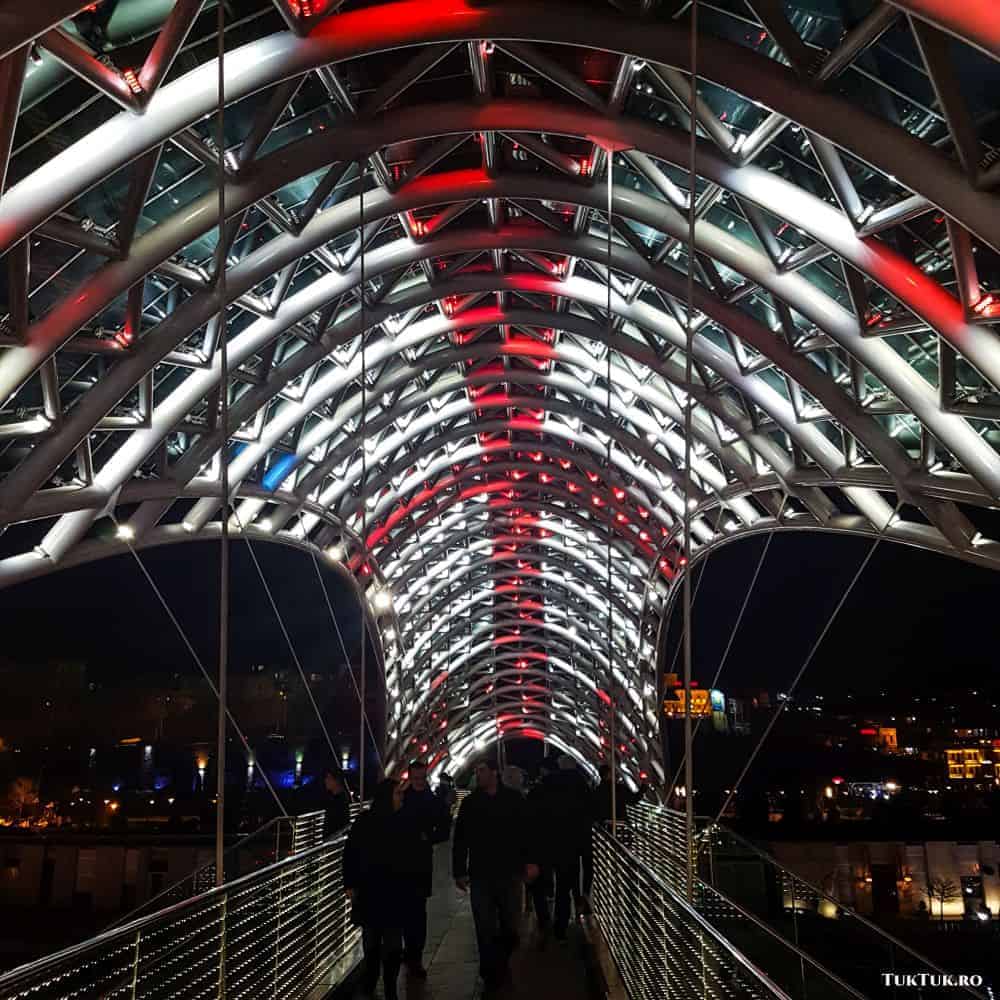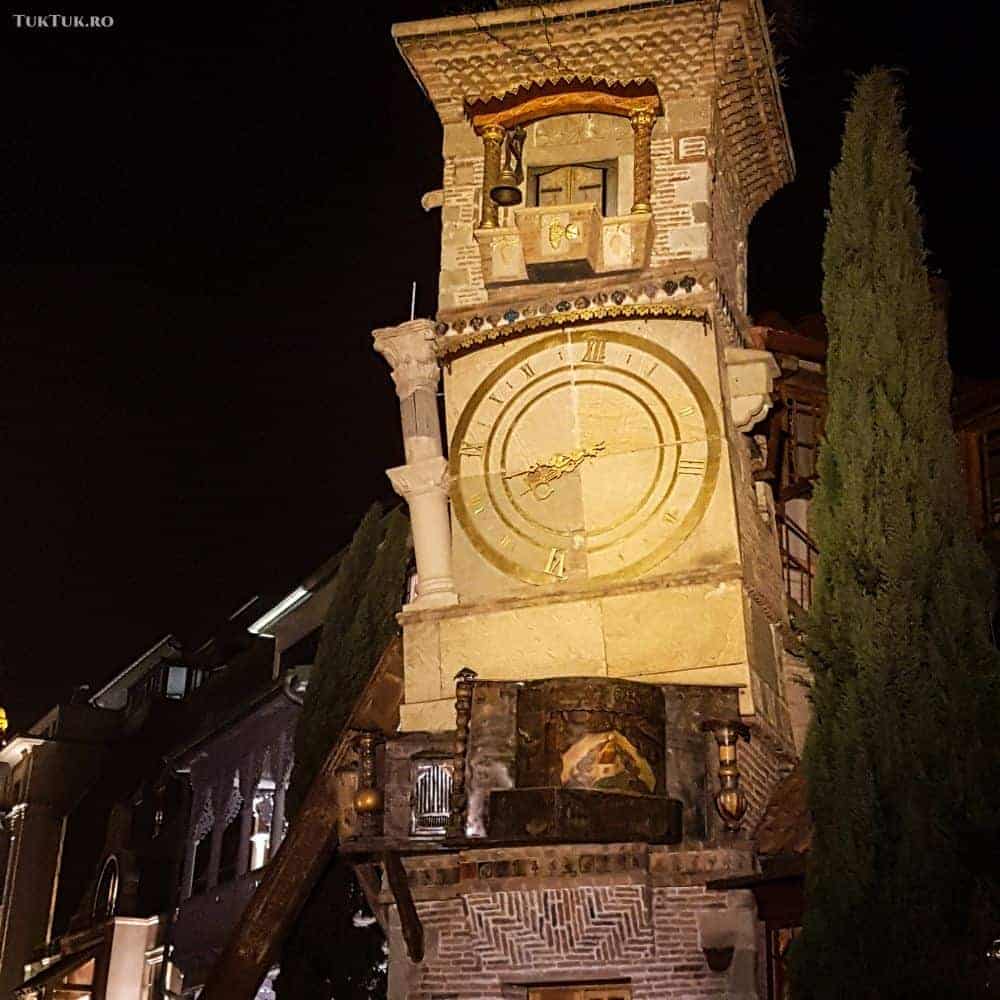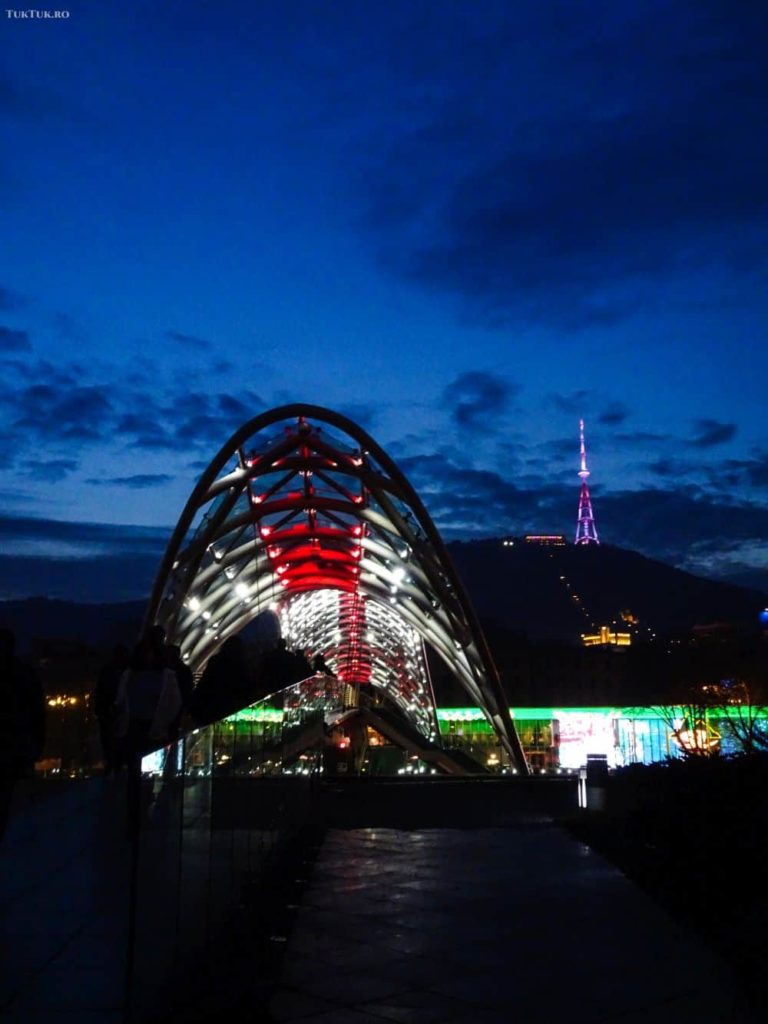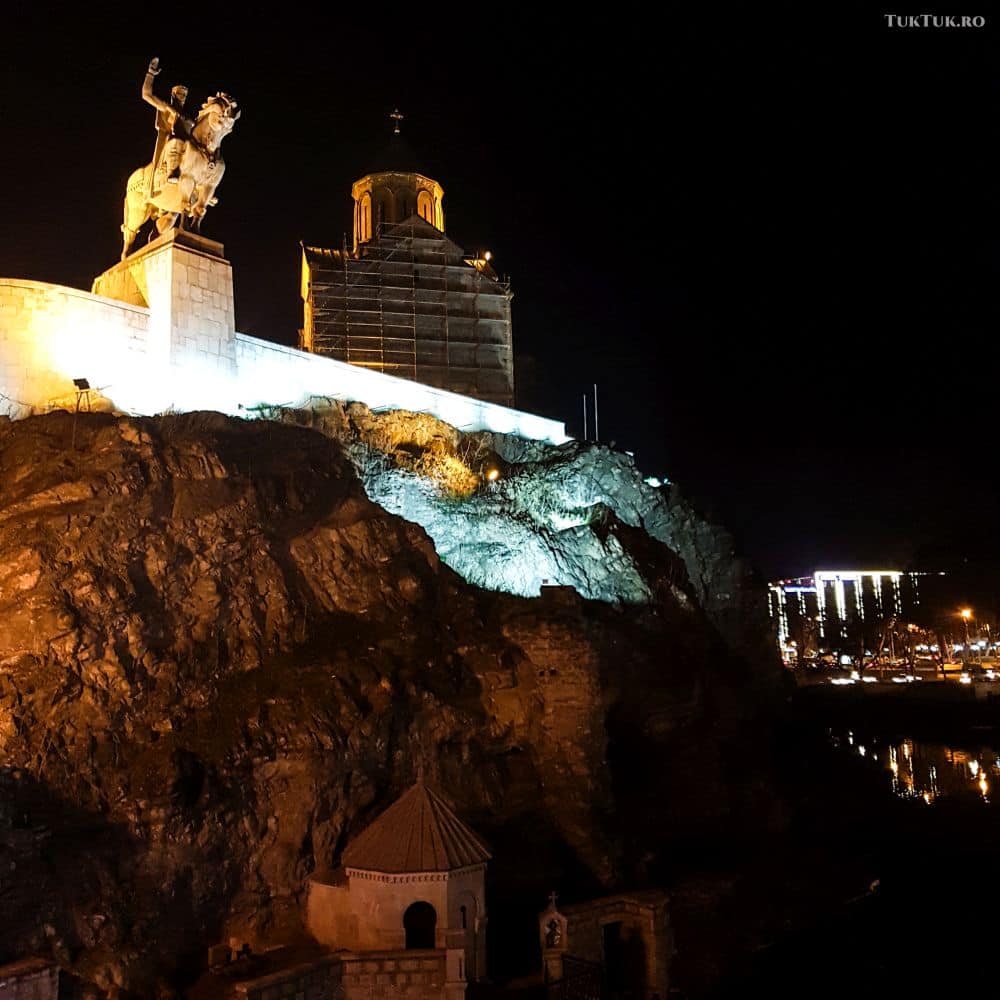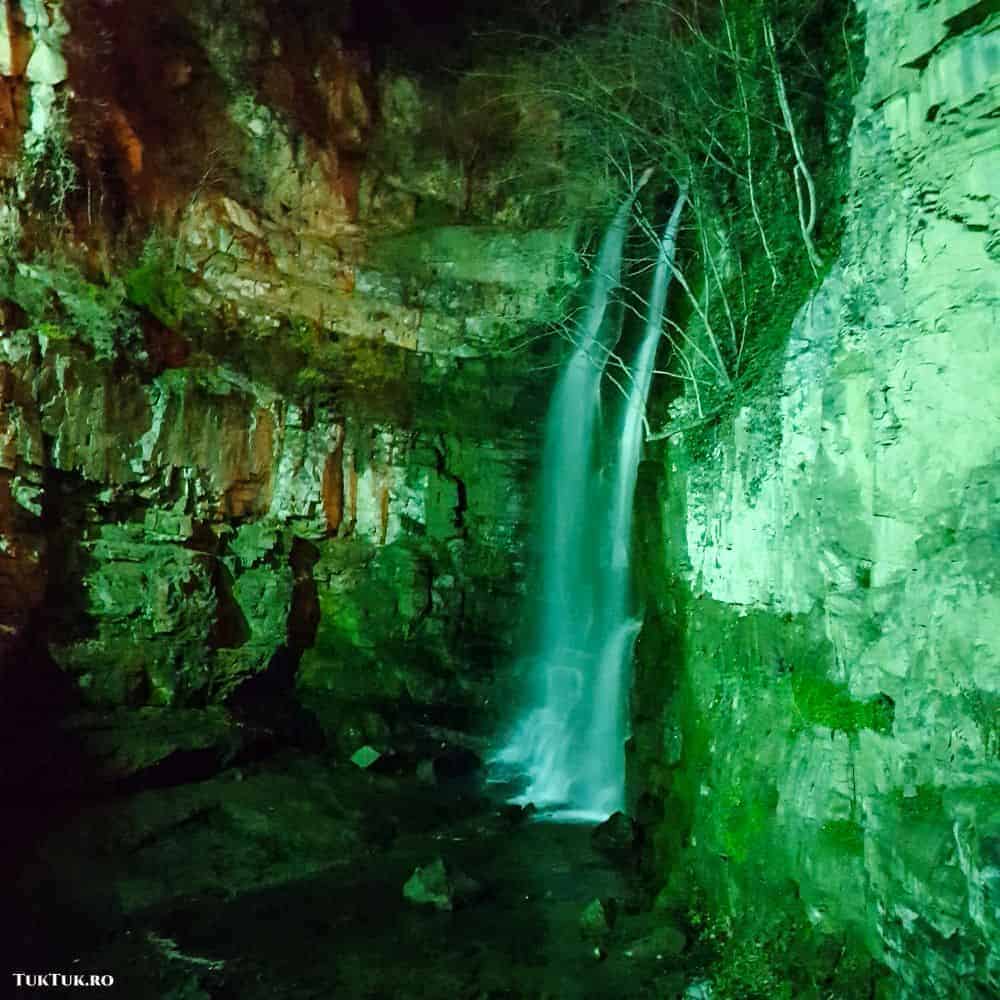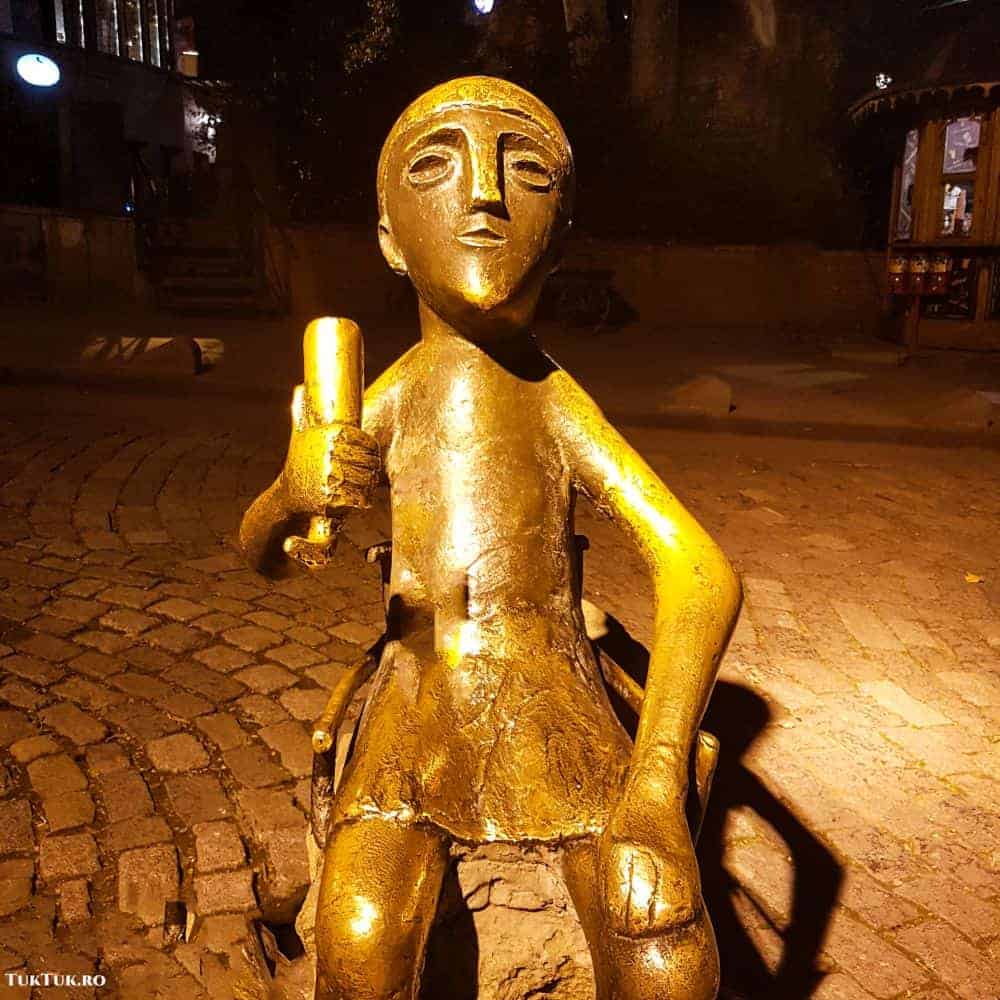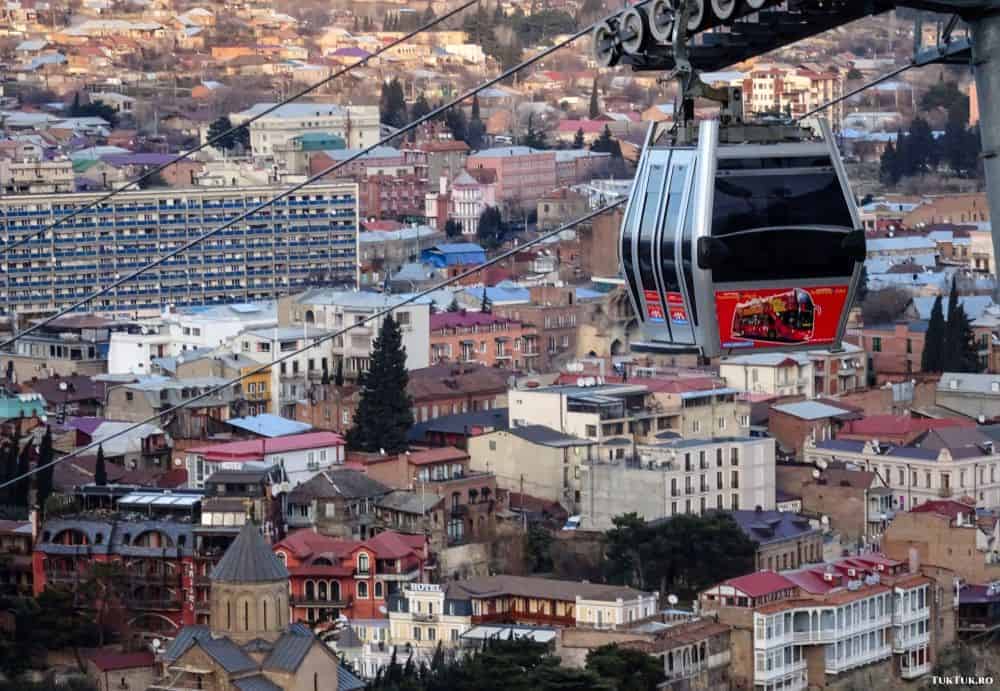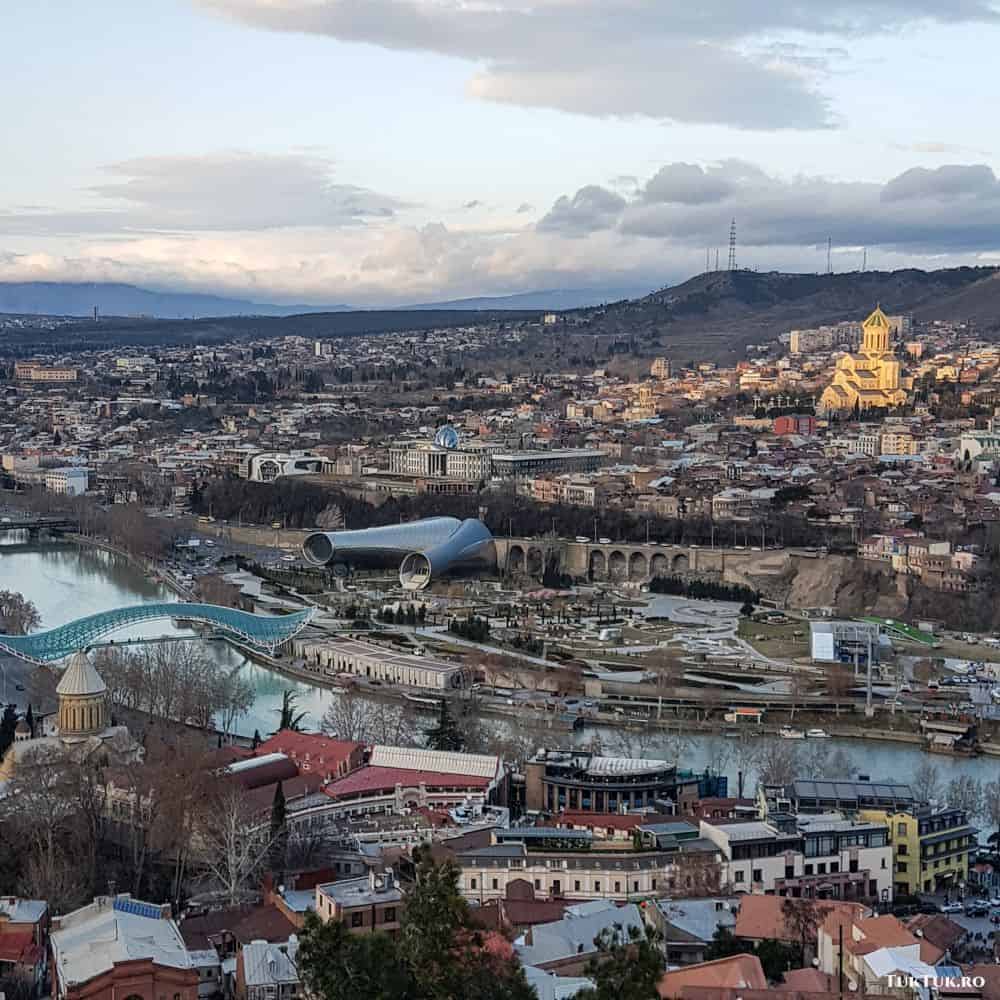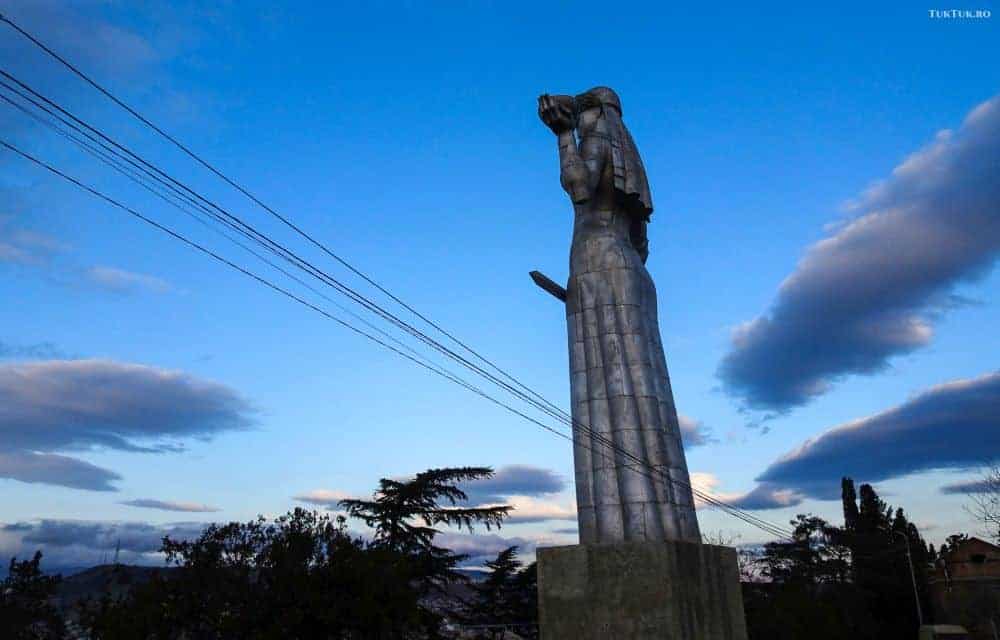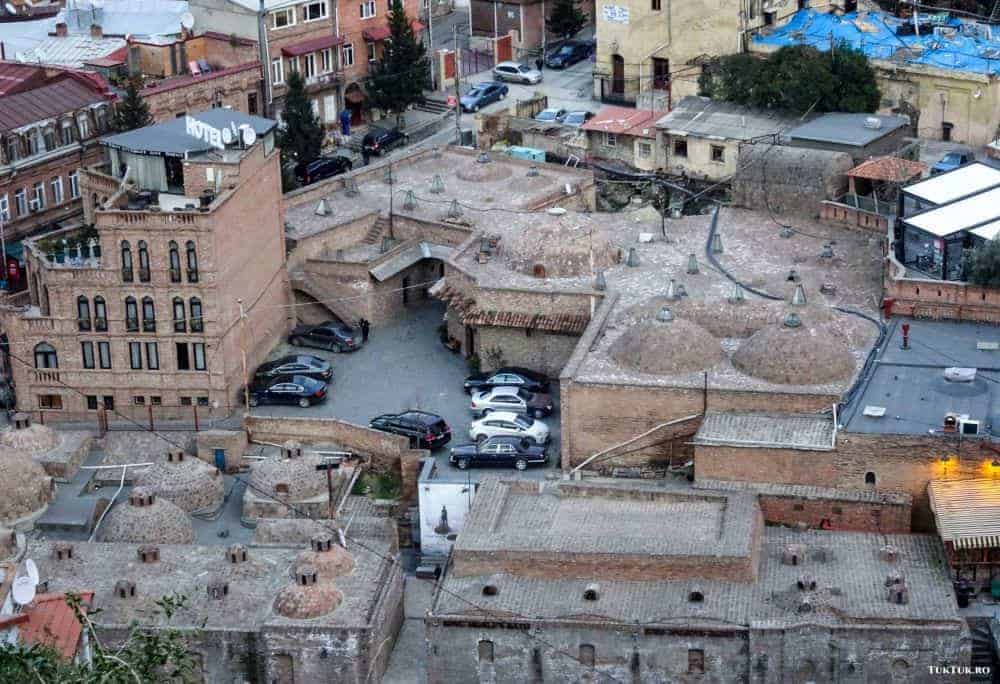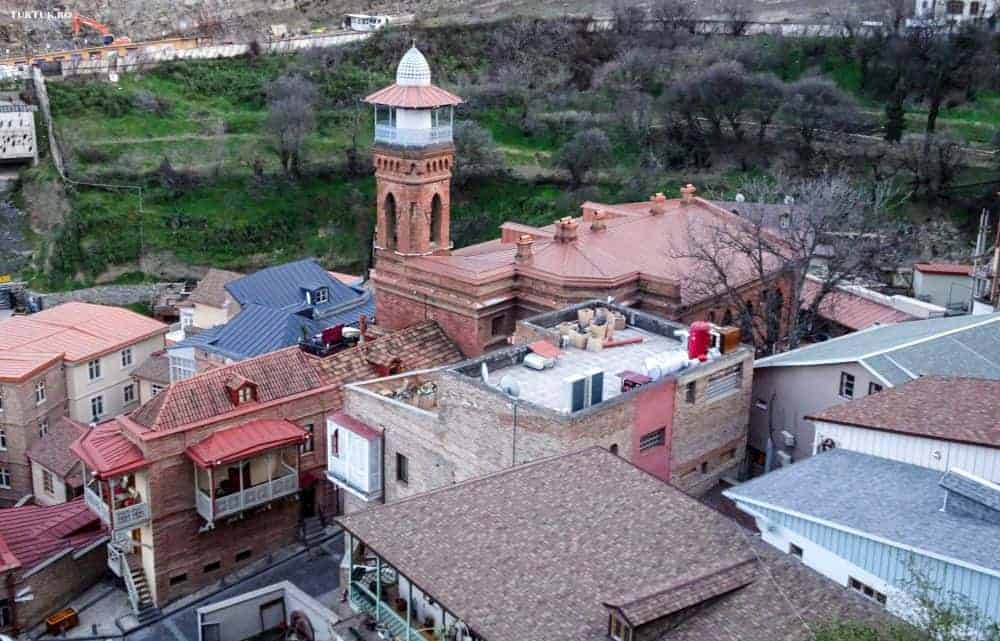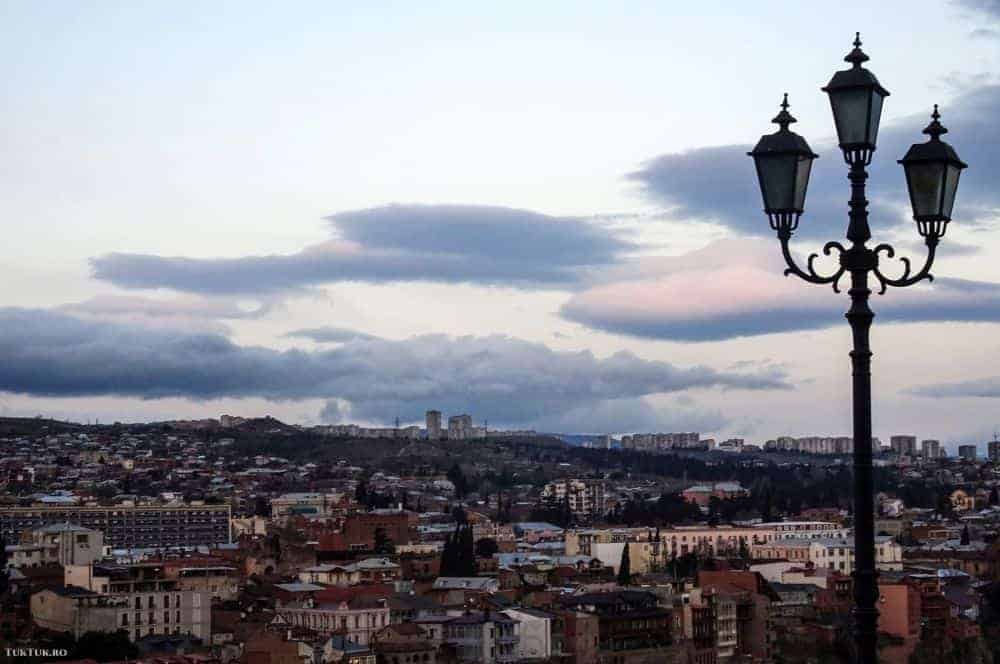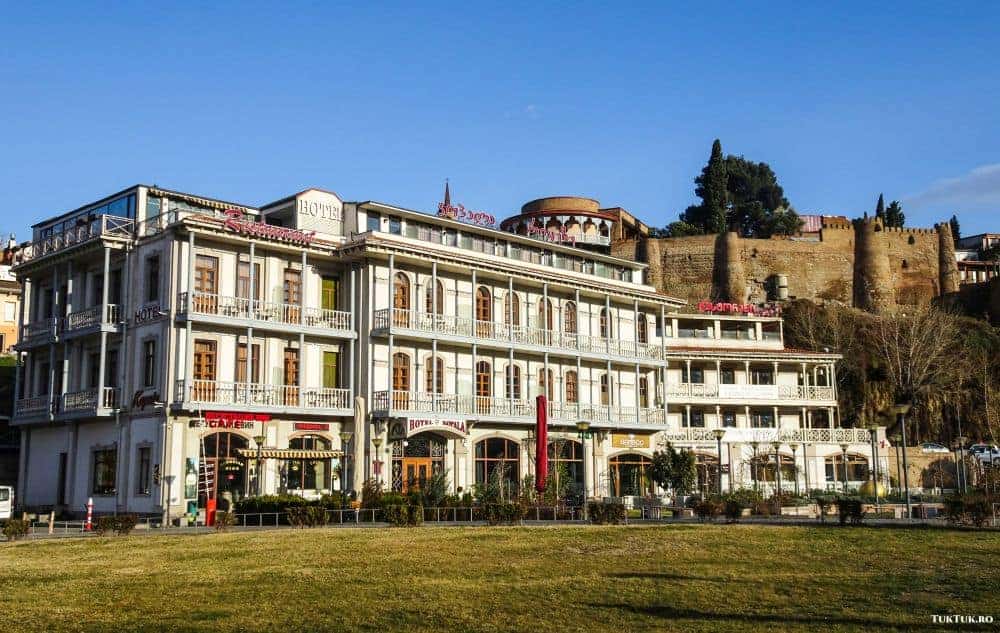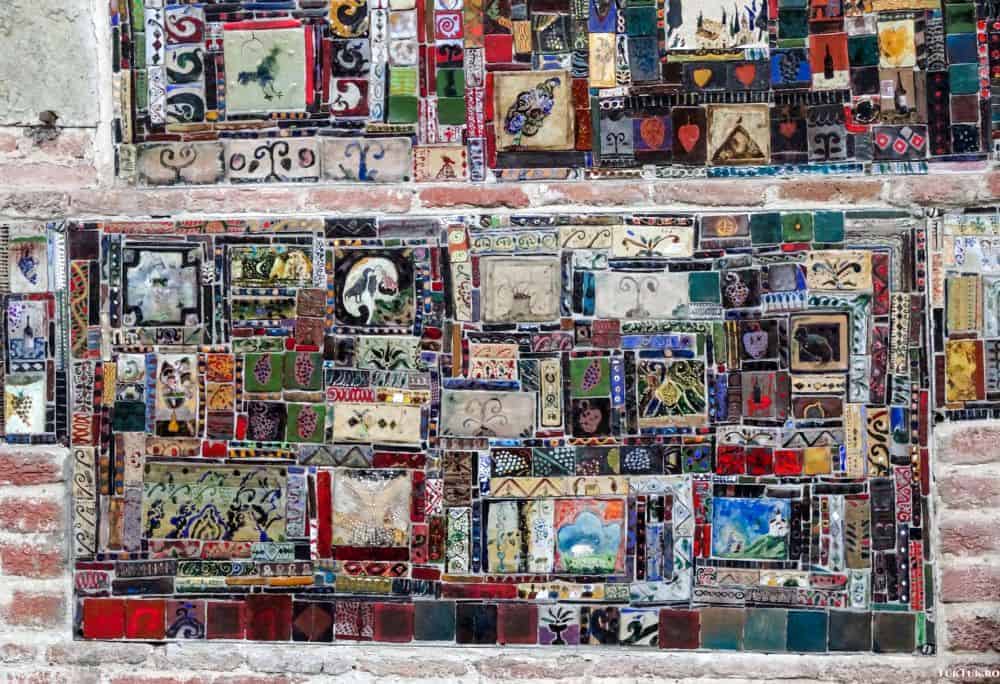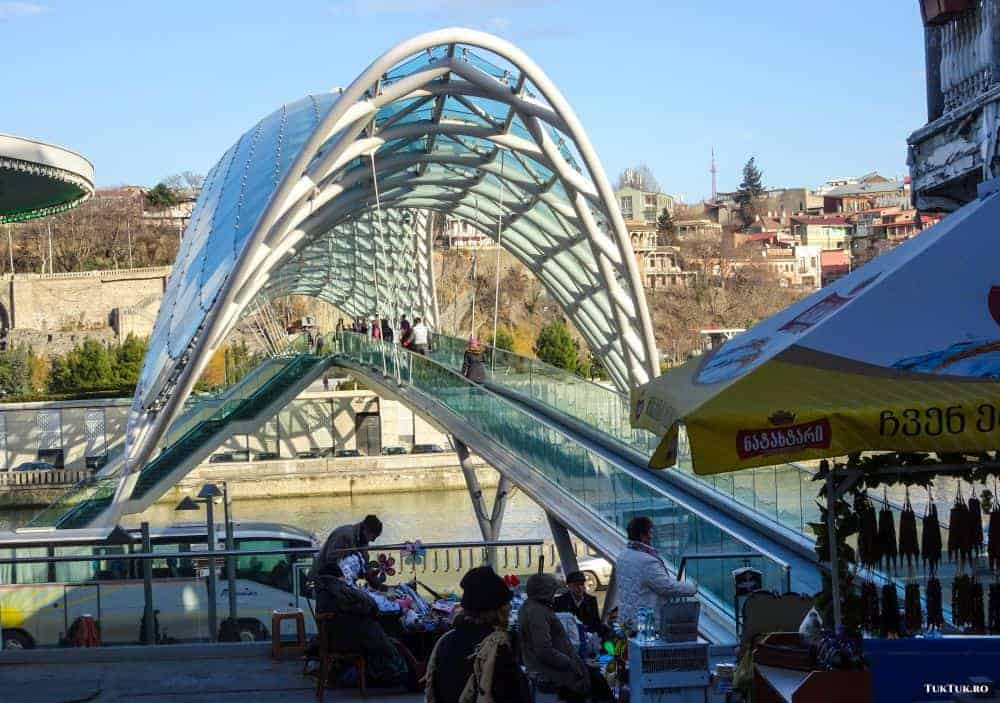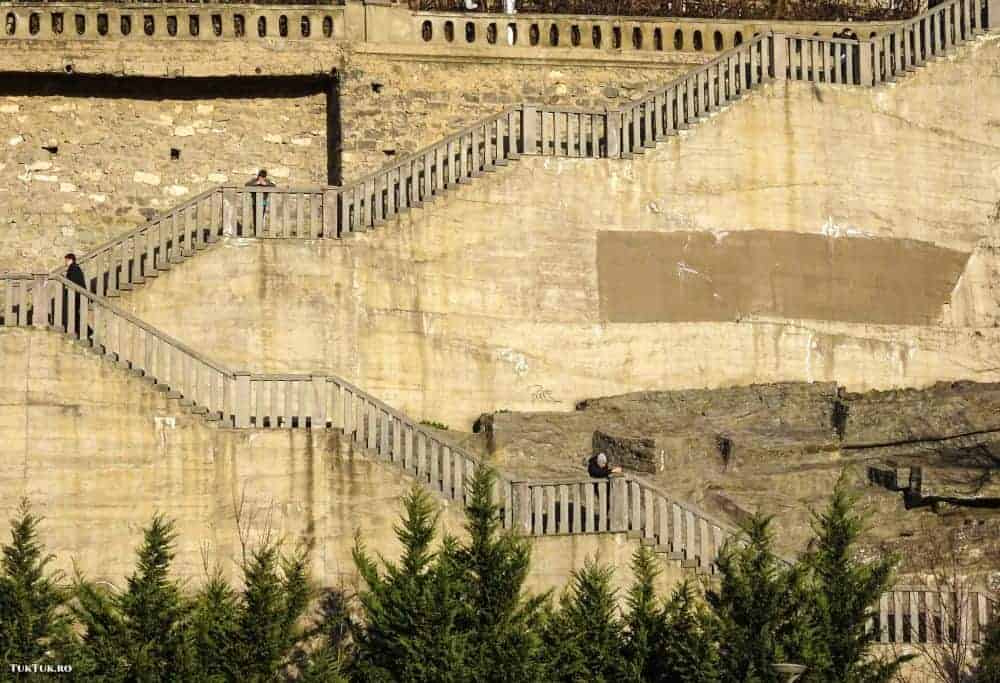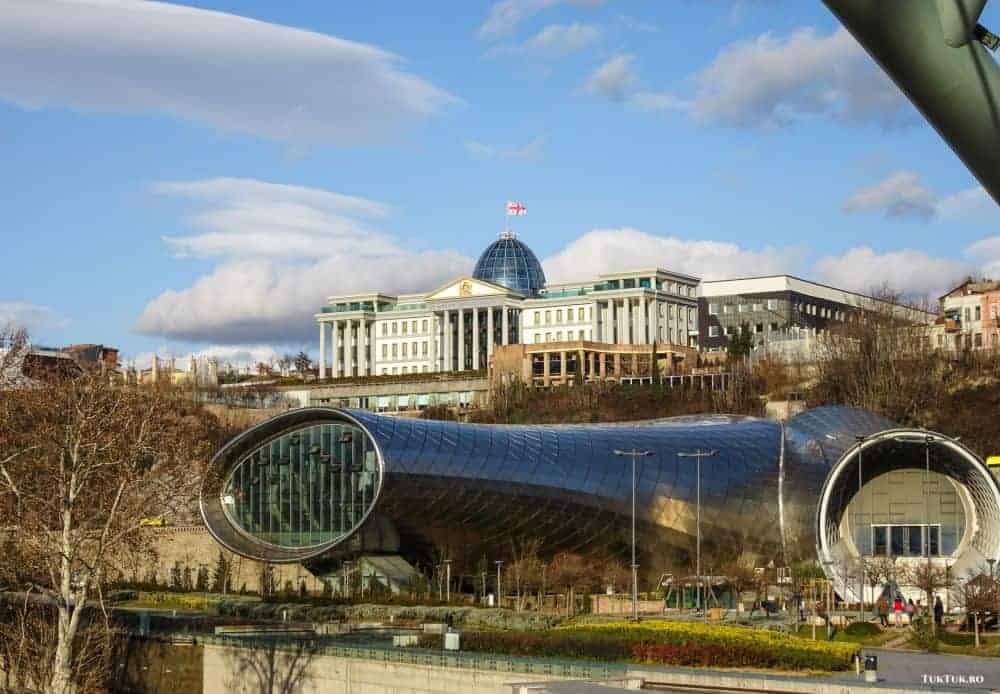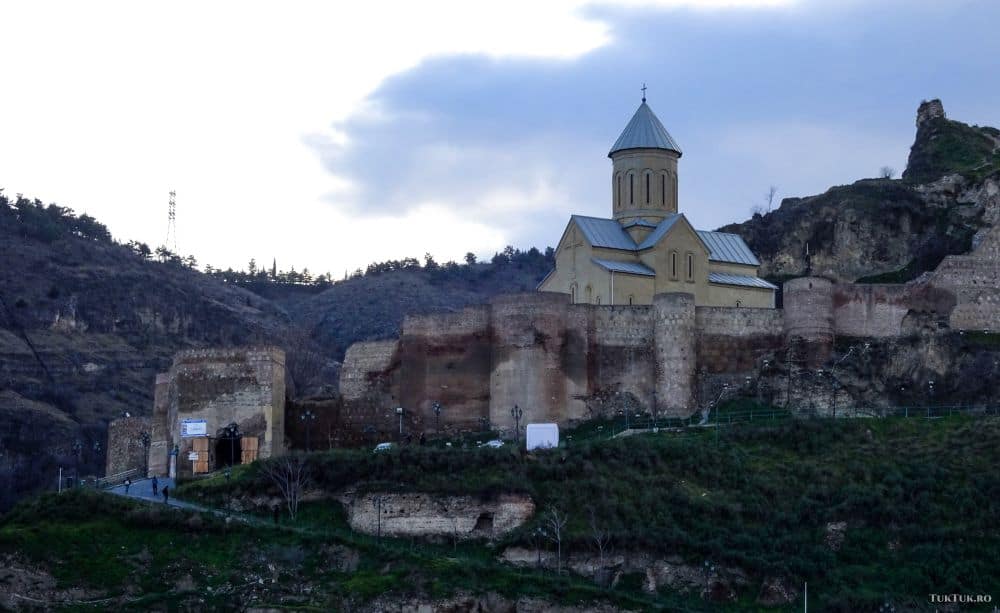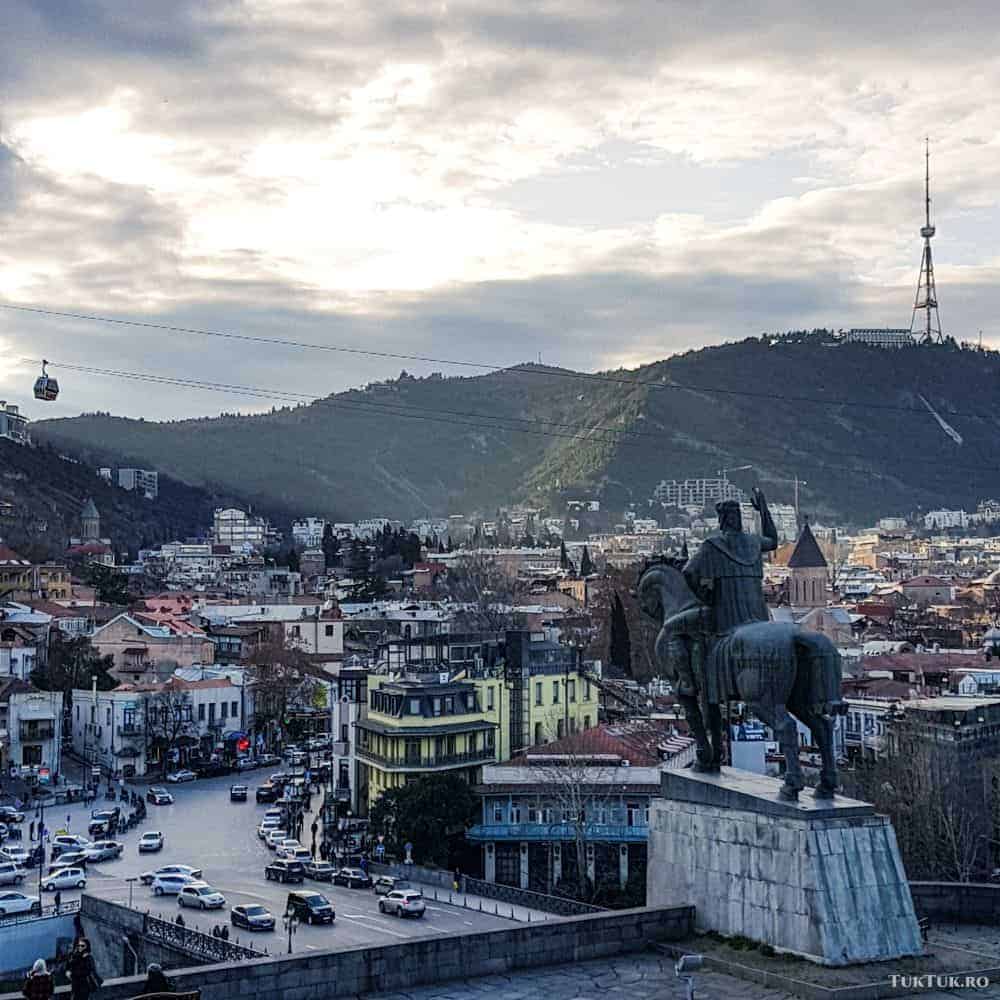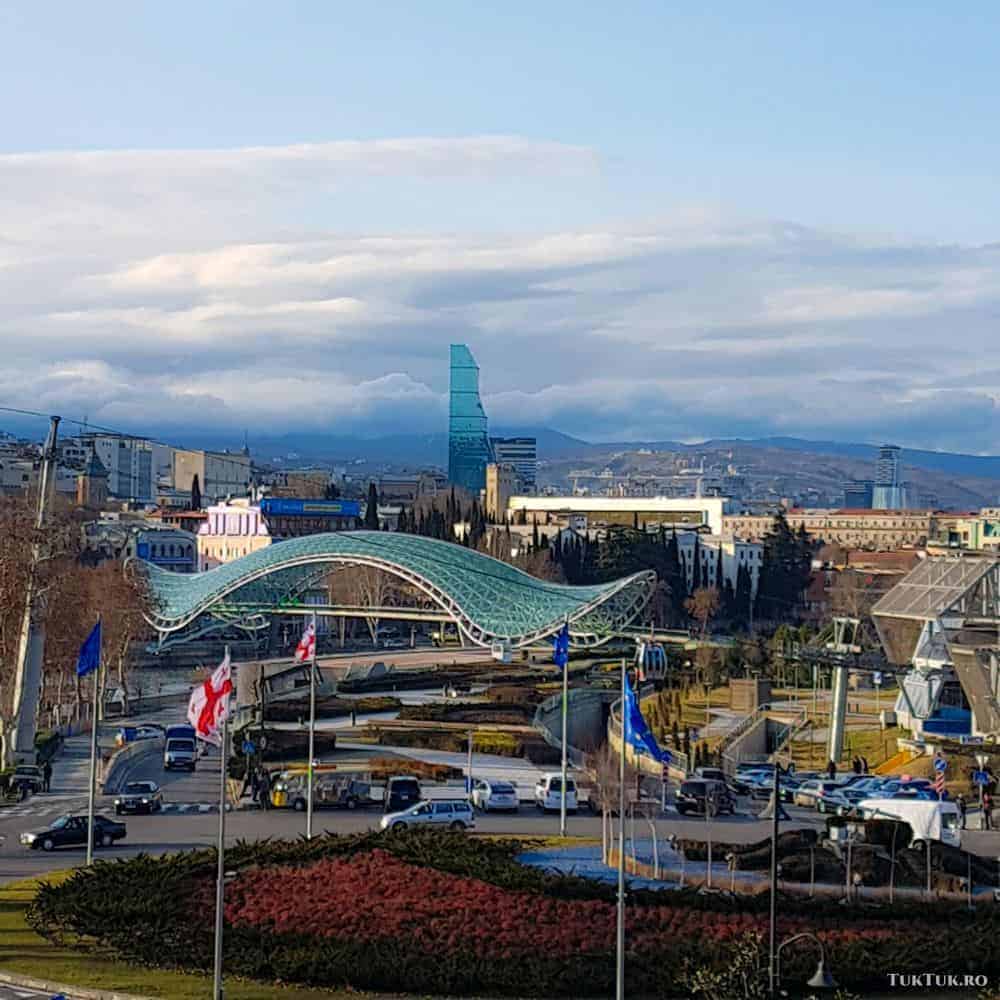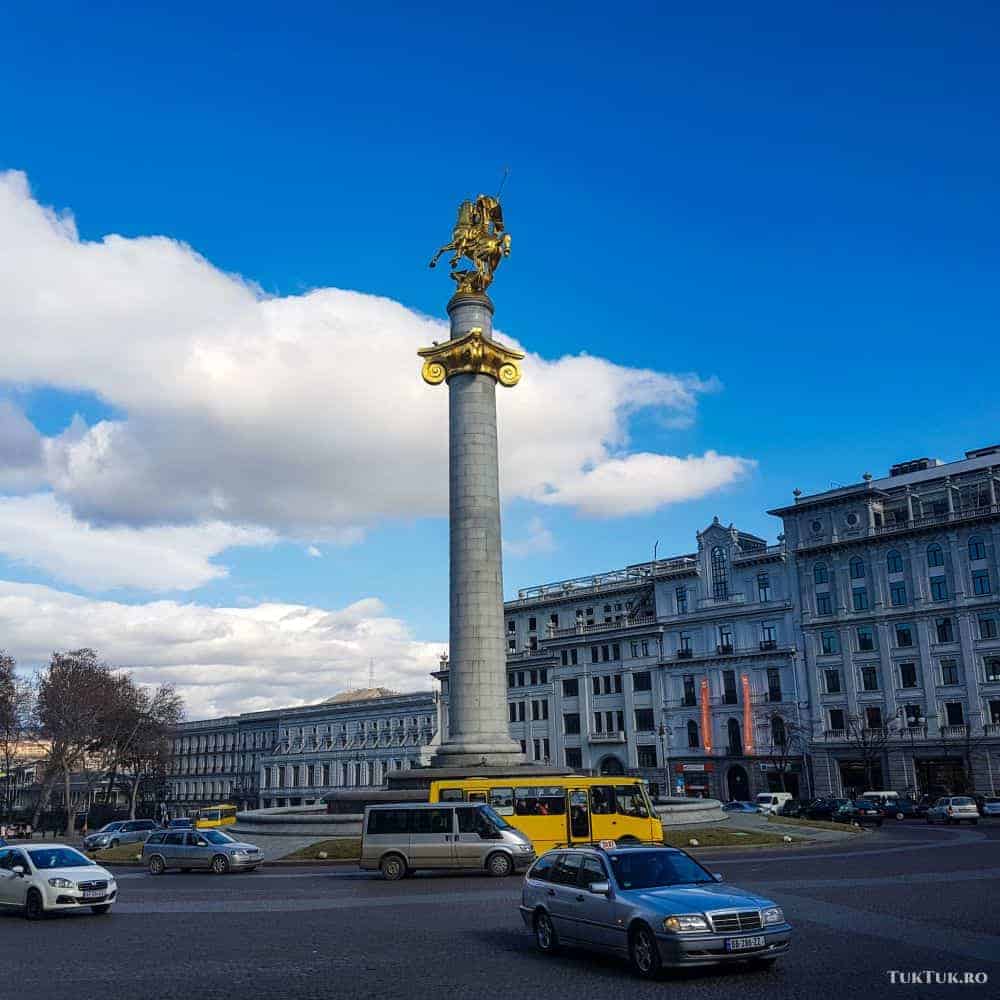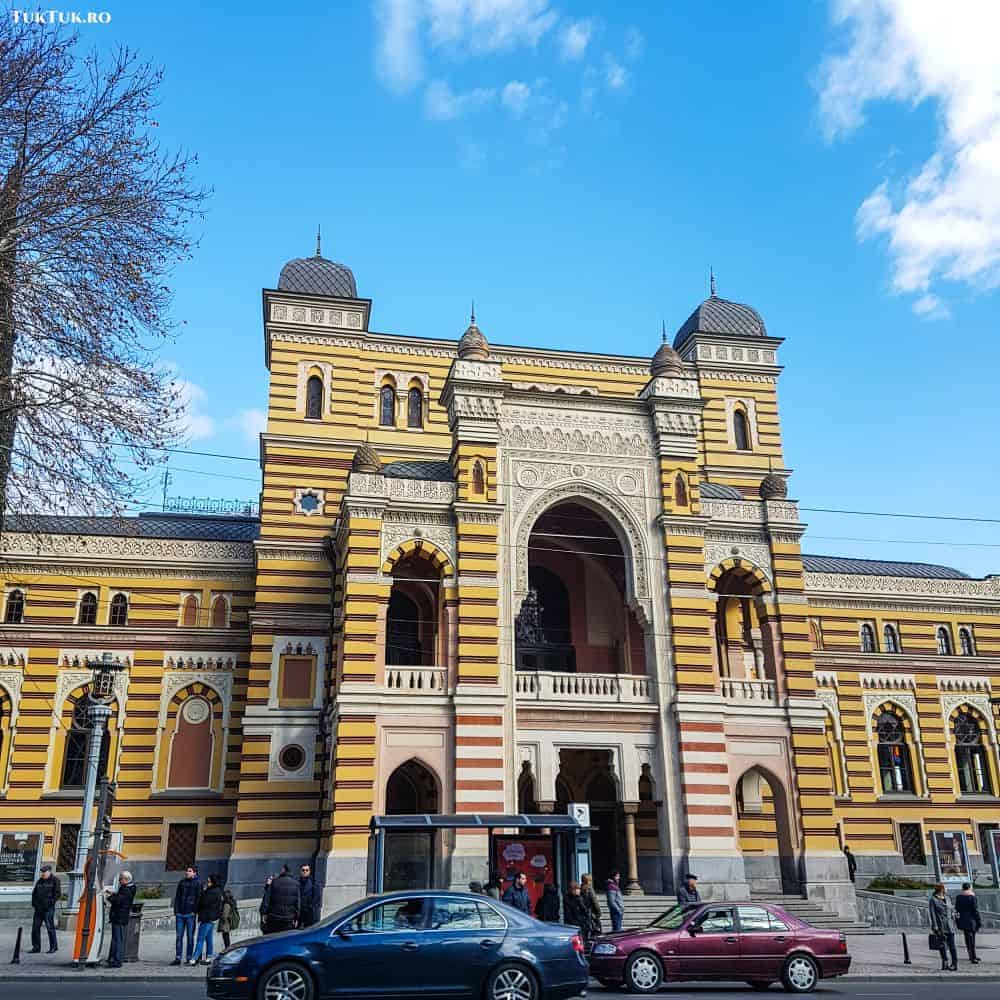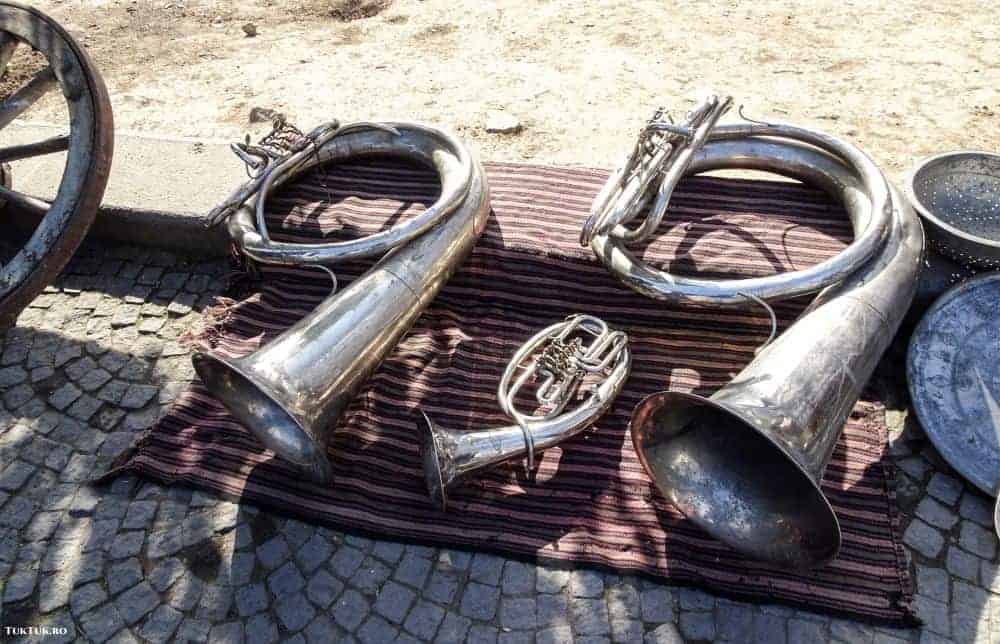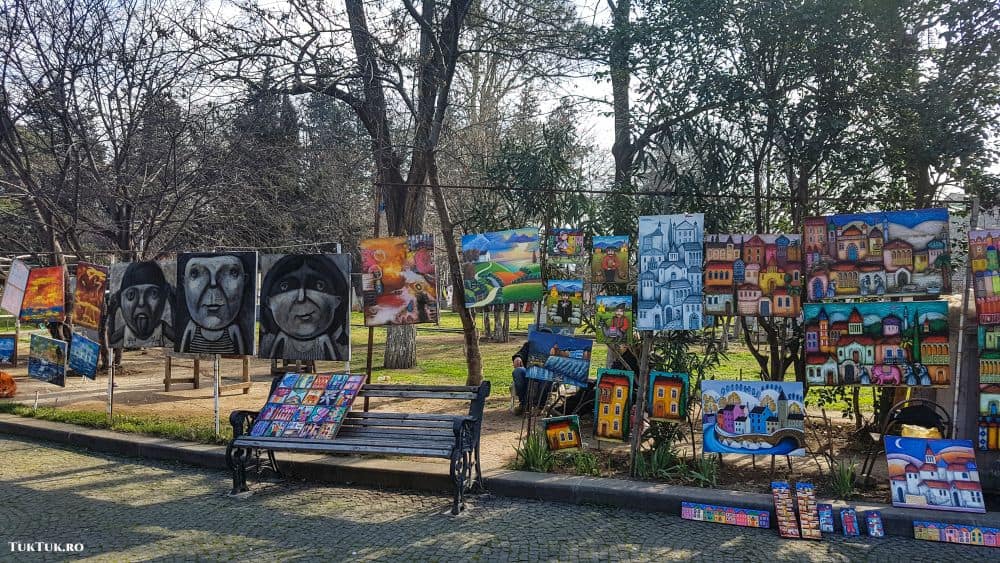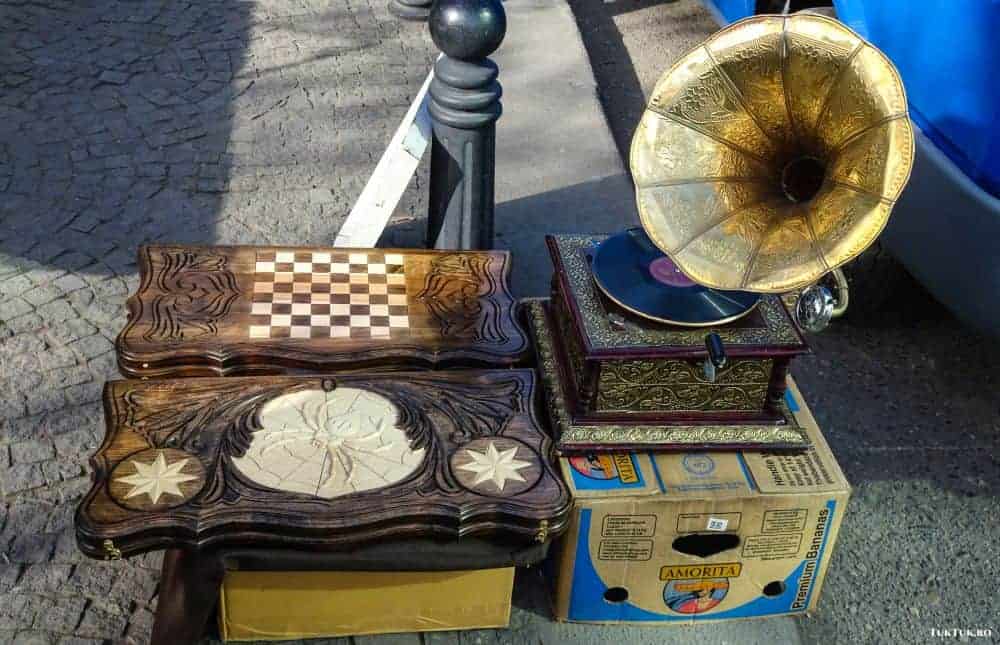The night falls over Tbilisi, and the city lights are starting to go crazy. Rarely have I seen a more harmoniously lit city at night, as the capital of Georgia. In fact, there’s a chaotic harmony in this particular city, which for 400 years was called the Emirate of Tbilisi and was an Arab city-state. Despite the bitter history that has plagued Georgia and its capital city for centuries, Tbilisi today opens the visitor as a rare flower.
There’s something magical in this city, something unique and at the same time familiar. After arrival, I got acquainted from the very beginning with Georgian cuisine, about which I had heard only good things. The first thing you get on the table is a plate of khachapuri, the cheese pie that you fall in love with instantly and that you could feed on for days, mainly because it comes in several variants, depending on the region you are in. But we talk about food in another episode and wine also, because Georgia without wine is a much more abstract notion and a somewhat more deserted destination. Now, let’s see how to visit Tbilisi, the capital of eclectiv magic.
Tbilisi at the evening hours
At the evening hours, I took a stroll on the streets of the old Tbilisi, stretched on the hill bordering one of the banks of the river Mtkvari (Kura, as the Turks call it), the one who crosses the city almost like a leitmotif, giving it a glimpse of personality and sense. Over the river, the Georgians built a modern bridge lit with white and red light bulbs. The Bridge of Peace, a steel-and-glass construction inaugurated in 2010, is the masterpiece of an Italian architect who wanted to make it look like a bizarre marine animal. A shape gave him the funny nickname Always (from a well-known ladies’ brand), but that doesn’t mean that the bridge is not spectacular and does not fit perfectly into the city’s urban landscape.
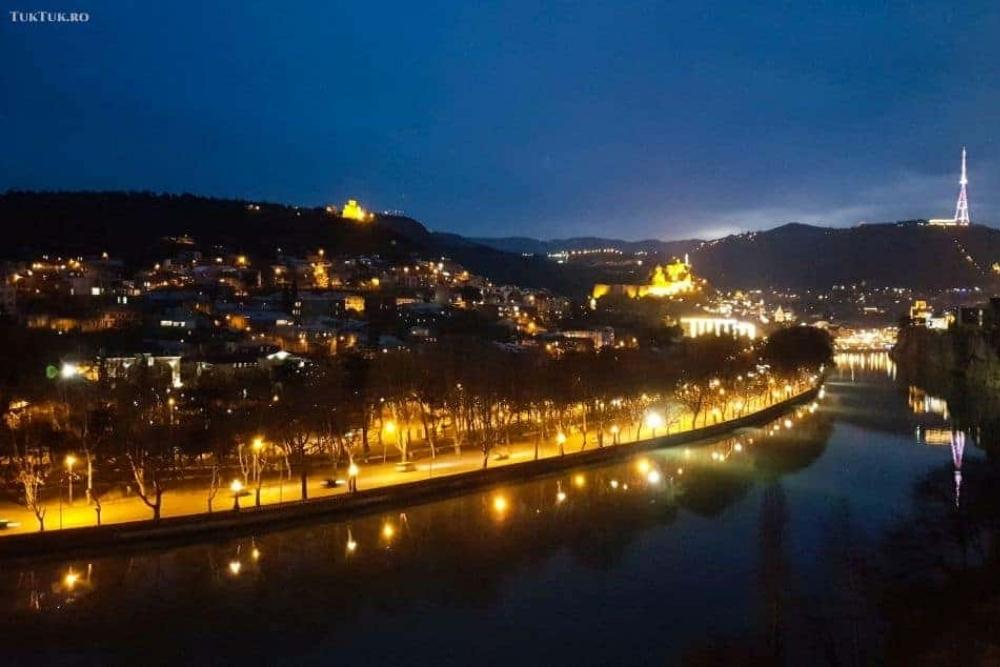
Tbilisi, with its 1.5 million inhabitants, may seem, at first glance, an eclectic conglomerate of buildings from various time zones, crowded one over the other by the rushed hand of a somewhat crazy urbanist, who was forced to work with the client’s material. But many elements give the town an undeniable beauty: from somewhere above the Old Town, Narikala fortress (17th century) supervises daily life as if assuming the role of “navel of the city”, the place where everything starts.
Basically, from the rock Sololaki, on which the fortress is located, on the right bank of the river Mtkvari, the old Tbilisi (Kala) reveals the visitor with its colored houses. Many reminiscents of the period when the Persians still made their heads through the area, with beautifully carved wooden balconies and narrow and cobbled streets.
The Old Town of Tbilisi
I went around the old town, and I discovered that Tbilisi is beautiful as a mysterious Eastern story, without the Muslim elements, but with a particular atmosphere, hardly comparable. Georgians have many churches, they have a cult for statues (left of the Soviet period), but at the same time, they are a people who love everything is modern, from architecture to music. Not for nothing, Tbilisi is one of the most vibrant European musical scenes, ranking second after Berlin in terms of electronic music events – with all its branches and sub-branches. Well, yes, Georgians love music. They like to sing and dance, their popular music is in high demand. Should I add that the famous Katie Melua, with her 9 million bicycles in Beijing, left from Georgia (more precisely, from Kutaisi)? So… Tbilisi nightlife is awsome.
The Narikala fortress dates back to the 4th century, at that time, a Persian citadel. I took the cable car that crosses the city, and I realized once more, as in other places (Funchal, for example, in Madeira), how good it is in terms of tourism to have such an element that moves people from one side to another, offering unforgettable views. The Mtatsamida Cable Car (inaugurated in 2012) is taken from Rike Park (if you do not necessarily want to walk from Meidan Square). The walk takes a few minutes, crossing the Mtkvari River, and the images taking place in front of your eyes are impressive. Seen from above, Tbilisi will fascinate you on the spot, and you will linger for minutes, as I did, to photograph the spectacular panorama.
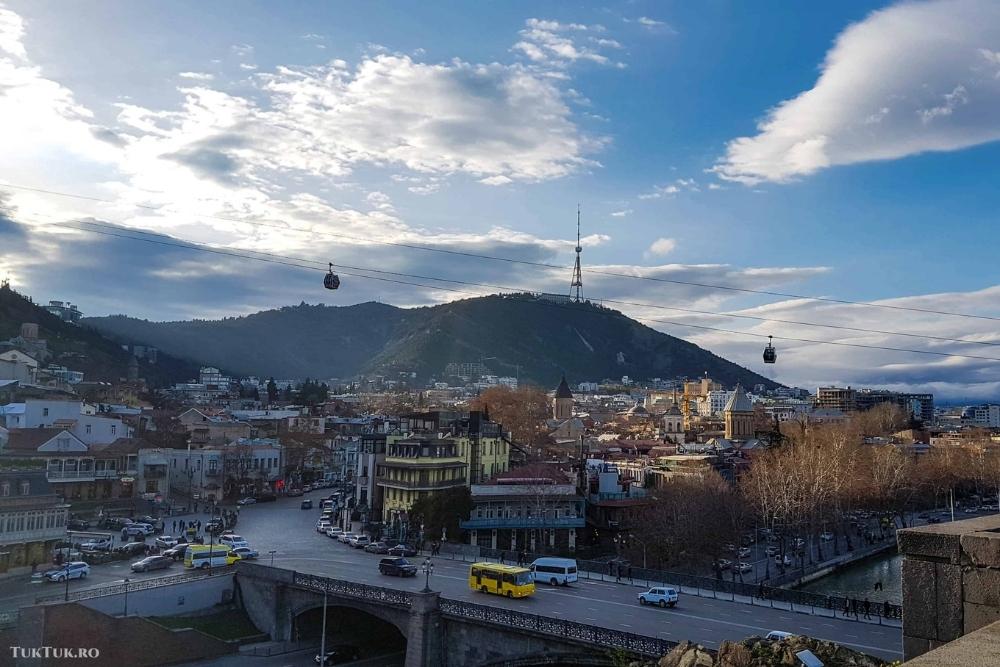
Afterward, you can choose to head to the most imposing statue of the city, Mama Georgia, the hell of a woman-statue, with a height of 20 meters, who watches over the capital of Georgia with the sword in one hand and with the wine cup in the other, conveying a symbolic message. Peace and hospitality for friends, anger for enemies. Kartlis Deda, as it is called in Georgian, has been guarding the Sololaki hill since 1958, when sculptor Elguja Amashukeli placed it there to mark the 1500th anniversary of Tbilisi. An imposing and beautiful aluminum statue, which the Georgians worship, giving it due importance.
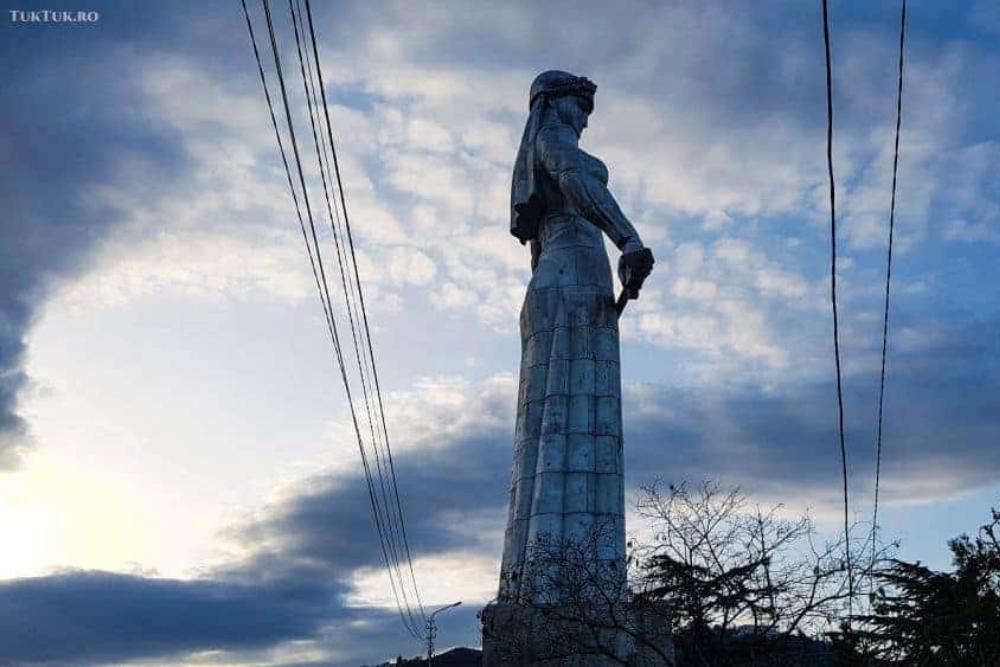
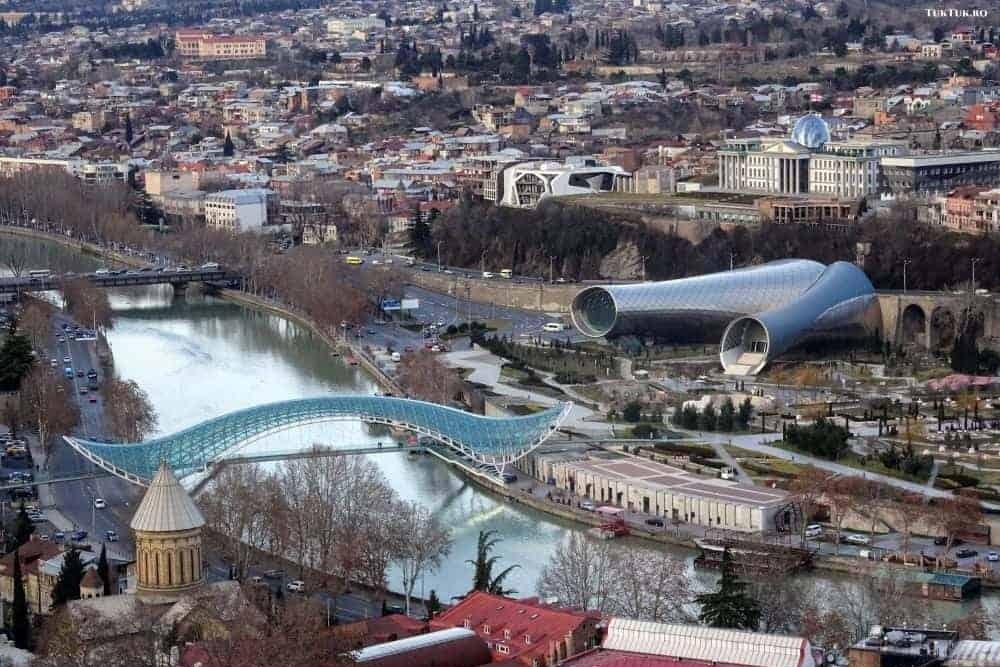
Over time, the Georgians, the Turks, and the Persians captured and occupied Narikala until the eternal “friends”, the Russians, stored here a lot of ammunition that exploded in 1827, blasting everything to the ground. From Narikala, you can quickly descend on the streets on the hill, down to the city. I stopped at a charming, small, and friendly cafe, where I had tea and tested the only Georgian beer these days – Black Lion, a tasty IPA. Drinking beer in Georgia, the country making wine for 8,000 years, is kind of blasphemy, but you can’t go to a country without trying the local beer.
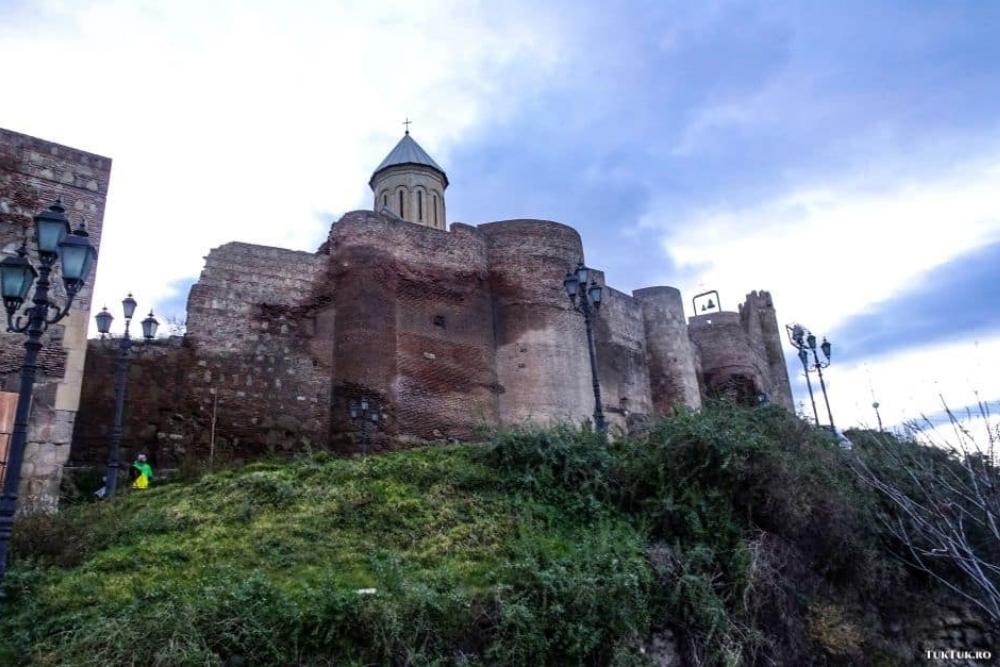
Then I walked through the old town, breathing the air of a settlement that the legend says was founded by King Vakhtang Gorgasali of Kartli in the 5th century. It seems that the king was on the hunt, watching a poor wounded deer which, in the rush of death, fell into a pit containing a sulfur tank. Miraculously, the deer recovered, and the king decided to build a modern city here. In reality, Gorgasali recaptured the old city from the hands of the Persians and moved the capital of Georgia to Tbilisi from Mtskheta. All in all, however, the name of the city comes from the hot springs on which it is located: tbili translates as warm, and the meaning is not only factual but also metaphorical. Tbilisi really is a warm and welcoming city. Even if we consider that, from a meteorological point of view, winter is not much disturbed by snow, although the climate is similar to that of Bucharest.
Tbilisi is a town you’ll like from the very start. You can find a lot of shortcomings, you can compare it with other European cities (I was reminded of Salzburg to some extent, due to the settlement, the river, the fortress) but in the end it is impossible not to admire the strength of its inhabitants, who raised it from the darkness of the ’90s. When, after the proclamation of Georgia’s independence (1991), the capital was the bastion of the Soviet opposition regime, living at the same time more than a decade of darkness, poverty, shortages, and corruption – unscrupulously sustained shortcomings by the administration of Eduard Shevardnadze. The Rose Revolution of 2003 would bring a new, completely changed air, together with a wave of investment and a change of mentality that made Tbilisi the modern city of today. It is a safe city where crime is minimal, where corruption seems to have disappeared completely, and state institutions seem to do their duty properly.
A waterfall in the middle of the city
I was surprised to find what I don’t think you’d find in any other capital of the world: a big waterfall, right into the Old Center. You’ll find it if you go along the Legvtakheli Canyon, which houses those hot sulfur springs (Abanotubani) from which I mentioned above that the name of the city is being drawn. The Tsavkisistskali River (do not strive to pronounce Georgian names – it’s a waste of time, and you won’t succeed anyway) leaks here from the Botanical Garden, giving birth to a waterfall that I discovered in amazement, at the evening clock. And I imagined how beautiful it would be on a warm summer day (the visit to Georgia was in February).
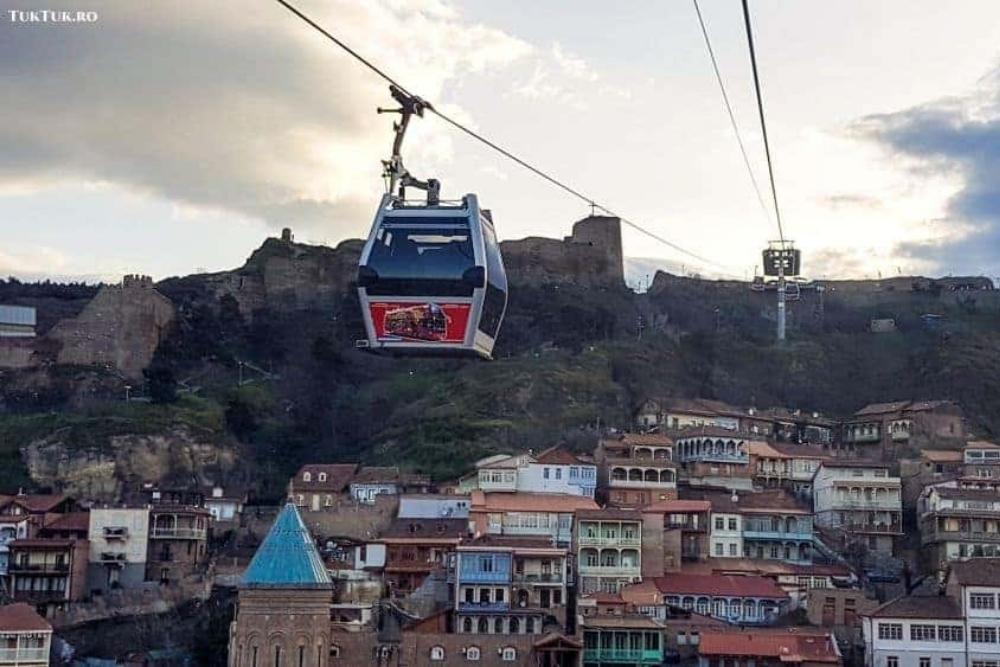
The Old Center offers other beautiful places you shouldn’t miss. One of these is the Clock Tower, chaotically rising, as if coming out of a fairy tale, near the puppet theater Gabriadze. On its top, an angel announces the exact time hitting a bell with a hammer every hour.
As a good Orthodox Christian (yes, the predominant religion in Georgia is orthodox – 84%), you can not pass without visiting the Metekhi Church, one of the city’s landmarks, which urges you to see from a promontory above the bridge of the same name. “Guarded” by the majestic statue of King Gorgasali, riding on his horse, the church marks the very place where he built his palace when he moved the capital to Tbilisi in the 5th century.
The church itself was originally built by another king, Demeter Tavdadebuli, between 1278 – 1289 and rebuilt several times, after several aggressions – the most important being that of the Mongolian invaders, in 1235. In 1801, after so many trials, there were not many buildings left in the city but the Russian governors of that time decided that they should do something, once and for all. A beautiful city to spread the news about. And they started with Rustaveli Boulevard.
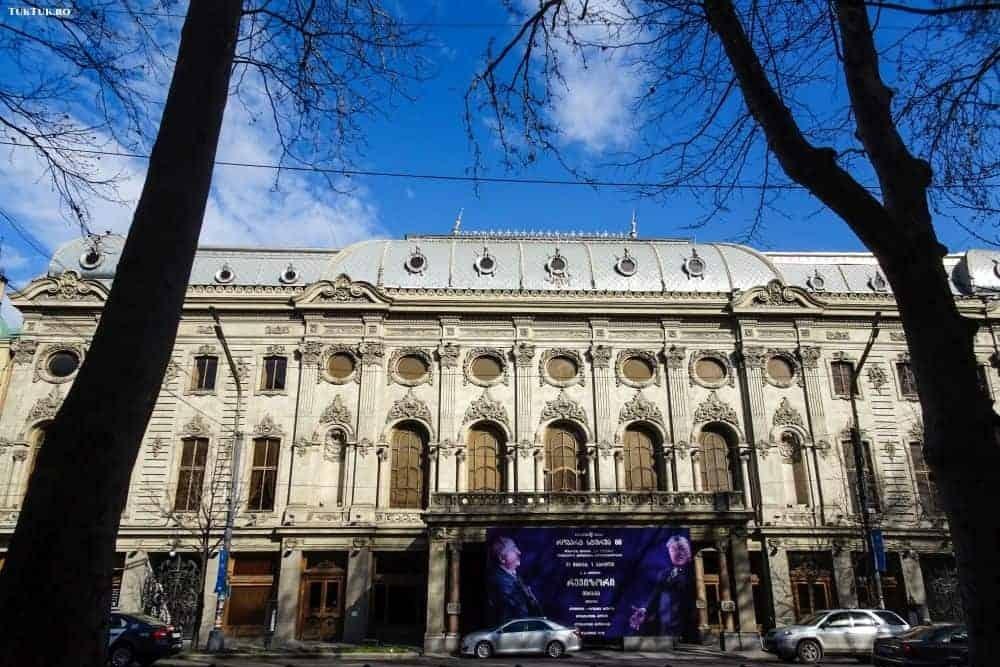
Today, Rustaveli is the main boulevard of the city. It bears the name of the local poet Shota Rustaveli. It is about 1.5 km long, along with many important buildings: The Parliament (built between 1938 and 1953), the Museum of Georgia, the National Gallery, the City Hall, the Museum of Fine Arts, the Opera and Ballet Theater (a splendid building built in the 19th century in neo-Moorish style), etc. It’s an imposing street, with heavy traffic, shops, and underground passages that it is necessary to pass from one side to the other, even if inside you will see nothing, not being light.
The flea market of Tbilisi
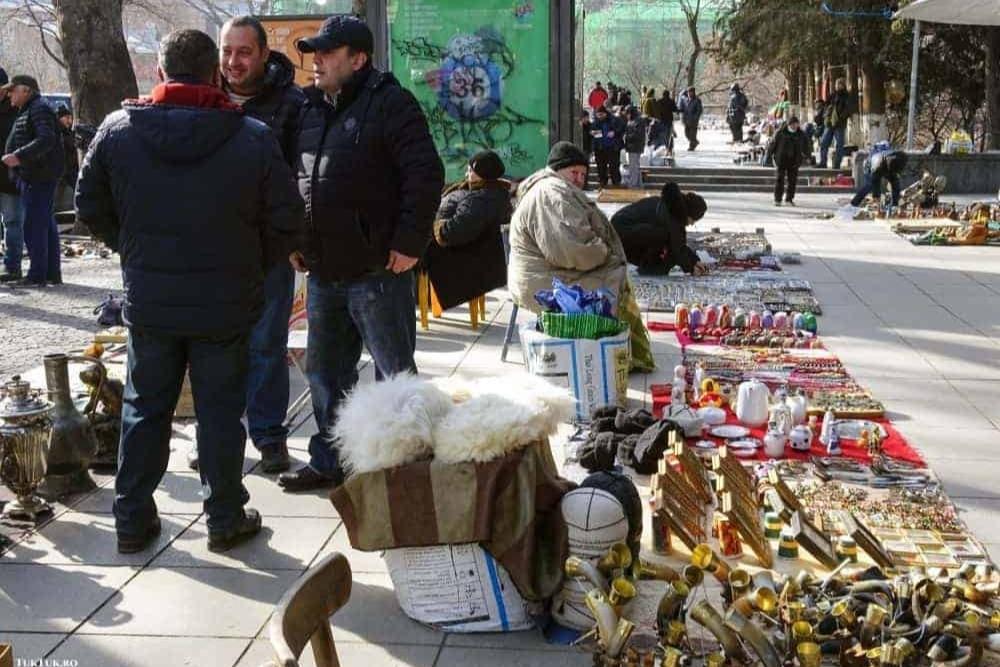
If you want to make the transition from the glam of the center to a slightly less bright area but of undeniable charm, go to the flea market, open daily between 10 and 17 (if good weather), near the Saarbruken Bridge, along the bank of the Mtkhvari River. It’s a fabulous bazaar where, if you have patience and time, you can discover things of a certain value, for which you can negotiate, starting at a high price, if you’re foreign. It’s a place that, on the one hand, transports you back in time because this is where the locals gather and they sell old items.
Everything is laid on the sidewalk: 20-year-old batteries, gramophones, silver jewelry, toothpaste from the time of Brezhnev, antique cameras, porcelain, huge platoons, bear skins… absolutely everything you find in this crazy market that on the inside sides (the market stretches around a park) suddenly changes its orientation. Because this is where the artists of the city are. Painters, cartoonists, and sculptors show off their creations, inviting you to buy them and show them in your own home. And many of them are really beautiful.
I liked Tbilisi. You have a mix of sensations in the capital of Georgia, from the one that you will feel, somehow, like home (at least for me, as a Romanian) to the one that you are in a modern capital, which should be located in Europe. After all, Georgians are a unique people. Even if we think that the Georgian language has its own alphabet (one of the oldest in the world – it is said that it was adapted from Aramaic and dated back to the 3rd century BC), with 33 letters and unique writing, as if drawn. Only four million people speak Georgian worldwide, a language with no “sister” in any other area on Earth. And there’s a lot of exciting things about it. For example, the general greeting in Georgian (Hello!) is Gamarjoba and translates to Victory!, reflecting the historical past full of warlike events. Also, Good morning / Good evening – Dila / Saghamo mshvidobisa translates into Morning / Evening of peace.
Georgians have three types of YES (diakh – formal, ki – informal, and ho – for everyday use); in their language, the third person has no gender, and if a word ends with a consonant, the letter i is added to the end, even if it is a foreign name or a first name. I mean, if you call yourself Constantin, the Georgians will call you Constantini. Returning to Tbilisi, however, I feel a hospitable city in which one can live well. Unless, one day, Russian “friendly” neighbors will find a new reason for the trouble.
You may also like: One night in Bangkok, eating on Yaowarat Street

